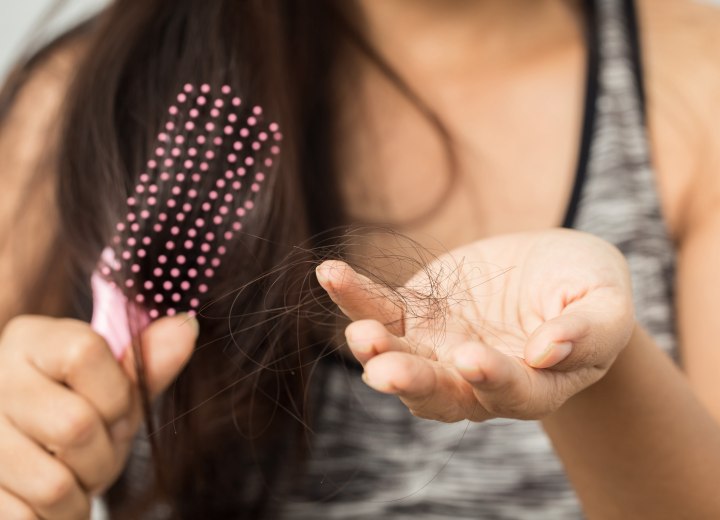Female Hair Loss & Pattern Baldness

Female pattern baldness or female androgenic alopecia, involves a typical pattern of hair loss in women. Hair generally grows half an inch per month and will grow for two to six years before entering a period of rest before it falls out. Shortly after the loss, a new hair will grow in the empty spot. On a "normal" head of hair, 85% of the hair is growing while 15% is in a state of rest. Baldness occurs when a new hair does not grow in when the original hair falls out.
Female pattern baldness is different from male pattern baldness in that thinning occurs all over the head but the front hairline is maintained. Rarely does the baldness result in total baldness as it often does in men. There are also other reasons for baldness in women other than female pattern baldness, including: temporary shedding of the hair (telogen effluvium), breaking of the hair (from such things as styling treatments and twisting or pulling of hair), patchy areas of total hairloss (alopecia areata, an immune disorder causing temporary hair loss), medication, and certain skin disorders.
The symptoms of female pattern baldness are thinning of hair over the entire head with mild or moderate hair loss at the crown or hairline. Diagnosis is based on appearance, though a skin biopsy may be done to determine the presence of a skin disorder. Remaining follicles may also be tested for signs of arsenic or lead poisoning, which could be treated with medication, as well as certain skin disorders.

Hair transplants are another form of treatment which consists of the removal of tiny plugs of hair from areas where the hair continues to grow. Those plugs of 1-2 hairs are then placed in areas that are balding. This treatment may cause minor scarring in the donor areas and carries a modest risk of skin infections. To achieve satisfactory results, the patient will be required to return for several sessions, which can start to add up; however, the results are excellent and permanent.
The suturing of hair pieces to the scalp, which is practiced in some parts of the world, is not recommended. This practice can lead to scarring, infections, and abscesses of the scalp. Artificial and removable hair pieces are highly recommended instead. Hair weaving, hairpieces, or changes in hairstyles are the safest and least expensive methods of treatment. As you can tell, there is no great way to regrow hair, so treatment is based on addressing the psychological stress and loss of self-esteem.
There is no known way to prevent female or male pattern baldness. However, there are ways to feel good about yourself that don't involve major life changes. If the loss of hair is really bothering you, consider getting a good hairpiece. Join a gym, learn a new hobby, but most importantly feel good in your own skin, even if more and more gray hair is showing.
©Hairfinder.com
See also:
Hair loss treatment
Dealing with hair loss